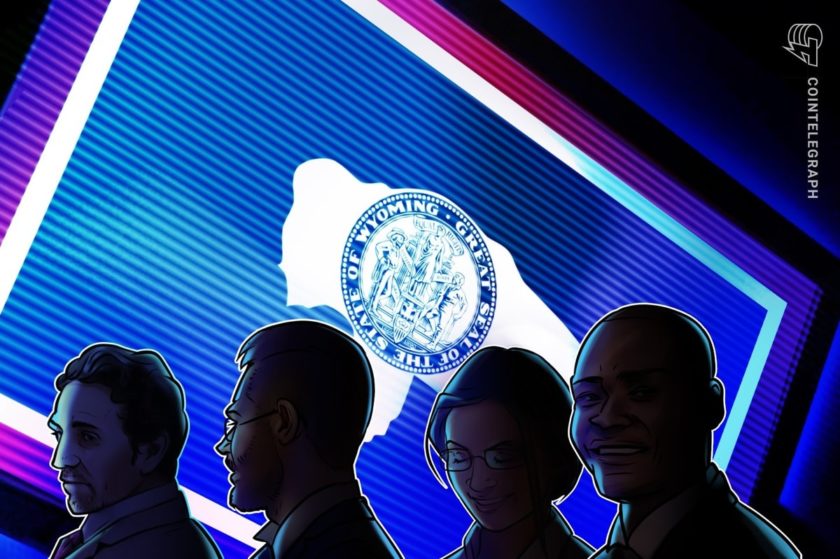Central banks around the world are exploring and in some cases even piloting Central Bank Digital Currencies (CBDCs). CBDCs hold the promise of realizing a broad range of new capabilities, including direct government disbursements to citizens, frictionless consumer payment and money-transfer systems, and a range of new financial instruments and monetary policy levers.
The present concept of CBDCs was directly inspired by Bitcoin and pushed into rapid development at the announcement of the Facebook Libra project—but CBDC’s are different from virtual currencies and cryptocurrencies, as they will be issued by the state and hold a legal tender status as declared by the government.
CBDC also presents somewhat of a dilemma to the original motivations and philosophy behind blockchain and Bitcoin, which were created to free us from debasing monetary policies and central bank control while ensuring a reliable decentralized financial system. The advent of CBDC while incorporating all the features and strengths of cryptocurrencies and digital assets has created a double-edged sword that could see our greatest potential weapon to true monetary freedom—blockchain—turned against us.
What are Privacy and Transparency
Blockchain brings both privacy and transparency. A key aspect of privacy in blockchains is the use of private and public keys. Blockchain systems use asymmetric cryptography to secure transactions between users. In these Blockchain systems, each user has a public and private key. The private key is what grants a cryptocurrency user ownership of the funds on a given address Privacy is guaranteed by the private key.
If a central authority does not have access to the private key, it has no idea who owns the coins and is unable to confiscate the coins even if the coins are involved in illegal activities. Transparency is because of blockchain’s unique feature – immutability where nobody can change or tamper with past records due to the consensus protocols of the blockchain. In addition, blockchain has simplified money flow, payment, and settlement process.
CBDC is not just about convenience and is much more than a buzzword. CBDC could have a profound impact on the fundamentals of modern structures of governance—particularly as it pertains to privacy and transparency of CBDC, turning the use of blockchain into a double-edged sword that has the potential to enslave us or free us.
What is CBDC
Different from Bitcoin, which deprived the power of money issuance from central banks, a CBDC is antithetical to this cause and seeks to maintain state and sovereign monetary powers while inheriting the advantages of blockchain.
At its core, a CBDC is a special type of stablecoins, which is being developed by the world’s central banks, who will hold both the power of money issuance and also issue the stablecoin. CBDC are a new form of fiat money turned digital and will be issued and based on national credit.
In other words, just as Fiat money is an extension of hidden government power—so is the CBDC. Since CBDC is much more flexible and transferrable, it could introduce a new form of currency wars as the competition of fiat money is the competition of currency application instead of shared consensus like the gold standard.
Reducing the role of government and cryptocurrency
One thing we should notice is that the money issuance power is absolute power, which actually contradicts our philosophy like separation of power, government role reduction.
Milton Friedman, the 1976 Nobel Memorial Prize winner in Economic Sciences, once said in 1999,
I think that the Internet is going to be one of the major forces for reducing the role of government. The one thing that’s missing, but that will soon be developed, is a reliable e-cash, a method whereby on the Internet you can transfer funds from A to B without A knowing B or B knowing A. The way I can take a $20 bill hand it over to you and then there’s no record of where it came from. You may get that without knowing who I am. That kind of thing will develop on the Internet and that will make it even easier for people using the Internet. Of course, it has its negative side. It means the gangsters, the people who are engaged in illegal transactions, will also have an easier way to carry on their business.
The “reliable e-cash” in Milton’s equation is quite similar to cryptocurrency which holds the key attributes like privacy and reliability. Milton did not define what is “reliable” in the interview, but Satoshi, the founder of bitcoin, had more to say,
The root problem with conventional currency is all the trust that’s required to make it work. The central bank must be trusted not to debase the currency, but the history of fiat currencies is full of breaches of that trust. Banks must be trusted to hold our money and transfer it electronically, but they lend it out in waves of credit bubbles with barely a fraction in reserve. We have to trust them with our privacy, trust them not to let identity thieves drain our accounts. Their massive overhead costs make micropayments impossible. In this sense, it’s more typical of a precious metal. Instead of the supply changing to keep the value the same, the supply is predetermined and the value changes. As the number of users grows, the value per coin increases. It has the potential for a positive feedback loop; as users increase, the value goes up, which could attract more users to take advantage of the increasing value.
If we go back to history, we can easily draw the conclusion that there is no reliable sovereign currency, even America has undergone national defaults for a few times in human history.
Privacy – Data Freedom
Privacy is a huge problem with big data and AI technology. Traditionally, our data is in the hands of third parties like Google and Facebook. They promised not to leak our data and do manipulation based on our data. Although we have laws on protecting privacy, such as GPDR—tech companies, and hackers are always trying to penetrating our privacy. Throughout history, centralized the third parties have continued to prove themselves untrustworthy.
The Cambridge Analytica scandal in 2018, which exposed the breach of data privacy of Facebook users was breached, serves as a reminder of the weakness of regulation in privacy protection. Just this year, Google has faced a class-action lawsuit filed on June 2 for the invasion of privacy and sharing users’ data. TikTok has been exposed for using a method that circumvented Google’s Androids privacy safeguards and allowed the app to track user’s online without permission. Even the Official Trump 2020 Election App collected the user data of Voters. User data can be used to manipulate emotions and preferences and thus manipulate the election.
Blockchain has the potential to protect private data by removing the “trusted third parties” from the entire equation and by guaranteeing that users own and control their personal data. If you want to get access to data, you need to be granted the one-time access permission. There are already practical solutions being proposed, like the paper “Decentralizing Privacy: Using Blockchain to Protect Personal Data”. Ex-Cambridge Analytica Employee admitted that “In my opinion, it’s really blockchain tech and blockchain entrepreneurs that are going to solve a lot of problems of the data protection crisis.”
There are side effects of privacy, as somebody could do illegal activities with cryptocurrencies. If we can connect criminals to certain Bitcoin addresses, we can sanction them by demanding prohibiting transactions with these addresses. Private coins, like Zcash, are more serious than Bitcoin. Private coins typically use Zero-Knowledge Proof to hide transaction data. For their continued use in illegal activity, some cryptocurrency exchanges have even delisted many privacy coins due to regulatory pressures.
As CBDC will be central bank controlled, is it possible that in the CBDC design, central authorities like the Federal Reserve will reserve the ability to confiscate CBDC coins without needing a private key? Or should third parties hold the private key as well? To what extent will CBDC provide the privacy of cash in the context of regulations, is a challenging prospect. But privacy should be a necessary element of CBDC.
Transparency
Blockchain provides an elegant backbone for cryptocurrency flow which can simplify audit and remove settlement. But if CBDC is designed for full transparency, it would be a disaster. This way government power will further be strengthed. As they not only have absolute power of money issuance, they will know every detail of what we do with our own money. We are transparent to the government in that we risk being enslaved and controlled, manipulated with such data. Human is easily ignited if you look back at the history which is largely written by populism and strongmen.
Conclusion
So central banks should pay attention to balance privacy and transparency of CBDC. And the general public should check what they have done. Blockchain’s privacy should be for the general public while blockchain’s transparency should be for the government for simplifying monitoring cost and reducing its roles. It is data freedom and part of monetary freedom.
Image source: Shutterstock




